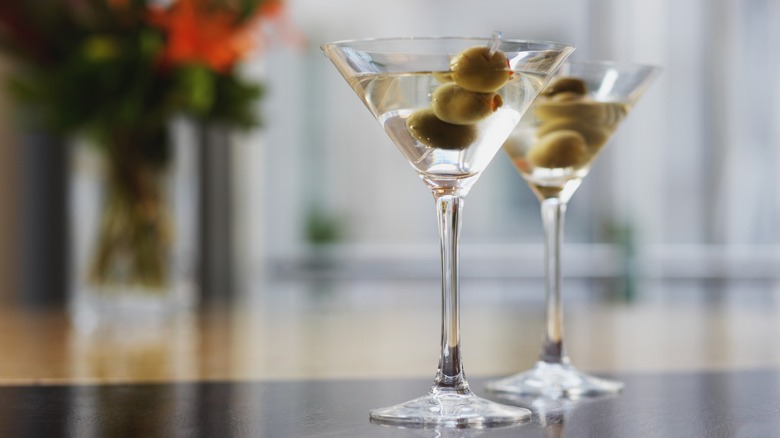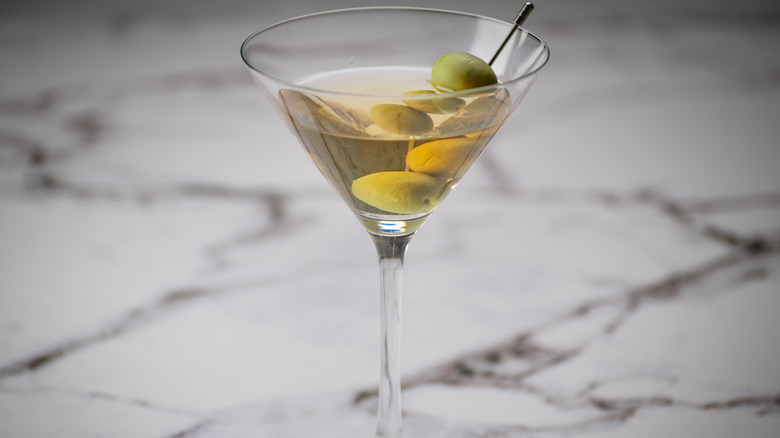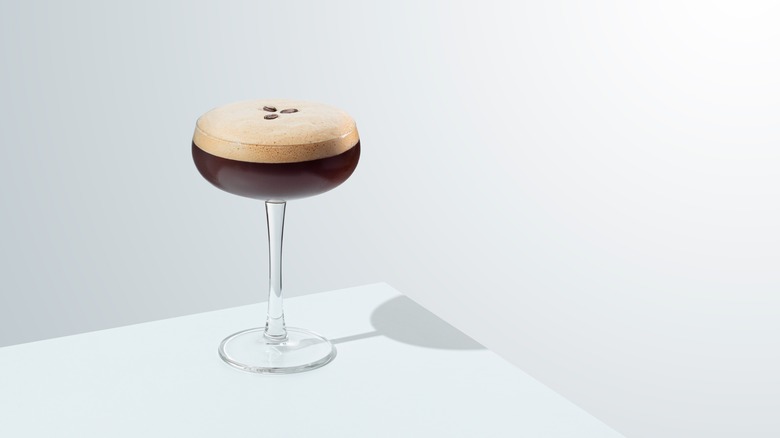What Makes A Martini 'Dry'?
There's an allure to a classic martini that's hard to describe. I heavily blame the James Bond movie franchise, but a lot of this cocktail's elegance lies in its deceptively simple makeup. At its core, a martini is simply a mixture of gin (or vodka) and dry vermouth. It's typically served up with an olive or a twist of citrus peel as a garnish, stirred on ice (not typically shaken, despite what Bond requests) and that's really about it. Or so you'd think. Because for something that simple, there are a surprising number of ways you can order one based on your preferences.
One of the common variations on a martini is the "dry" version. When you order one that way, that simply means you're requesting an easier hand on the dry vermouth, which is a fortified wine that's flavored with botanicals and fruit. Its sibling is sweet vermouth, which is often used in drinks such as Manhattans.
Ordering a dry martini allows the base spirit of gin or vodka to come through more clearly. You can be very specific about the amount of dry vermouth in your drink too, by requesting the bartender use a light hand. In fact, some people request so little that the vermouth barely kisses the interior surface of the glass. If you were to make a martini like Winston Churchill, it would be similar, as he supposedly drank straight gin out of a martini glass with the vermouth left alone in its bottle.
There are way more variations on martinis than you might think
Martinis come in way more variations than just dry. One of the more common requests you'll hear at the bar is for a "dirty" martini, which traditionally comes served with a splash of olive brine that adds a savory flavor to the drink. For those who love olives, this is an excuse to drink one in liquid form. If you're feeling particularly frisky, you can order an extra-dirty martini with even more olive juice. I've noticed that I tend to order dirty martinis if I'm hungry but don't want to commit to ordering food, since dirty martinis provide a lot of savory flavor without having to buy anything extra.
If you're olive-averse (I see you, folks), you can always order yours with a twist, which is a curly little piece of citrus peel on top. The twist adds a pleasant aroma to each sip, along with a touch of essential oil. Then there's the Gibson, which eschews both olives and citrus garnishes and replaces them with a pickled pearl onion. It's likely you'd have to ask the bartender if they even stock pickled onions, however, since they're not a common bar garnish these days. That's just the start, as there are many other versions of martinis where the base recipe has been adjusted, as well as numerous flavored martinis.
The world of flavored martinis is vast
Flavored martinis almost belong in their own category. That's because they aren't as simple as a dry or dirty martini and usually involve other ingredients that can dramatically change a martini's basic identity. Think of martinis like the lemon drop, appletini (hello, college years!), saketini, and the one that's still very popular these days, the espresso martini. And, well, we'd rather forget about the Velveeta martini. These all focus on additional flavors (oftentimes sweet ones) that don't necessarily highlight the gin or vodka base.
If you're new to drinking martinis, I highly recommend that you try whatever piques your interest until you find something that really sticks with you, whether it's a sweet martini variation or a more standard crisp one with no frills. I am going to warn you, however, that since martinis are primarily made of liquor, they're very strong and so don't mess around. That's why you'll see a lot of people linger over this particular cocktail. I suggest you do the same until you know exactly how you like to take yours, dry or otherwise.


